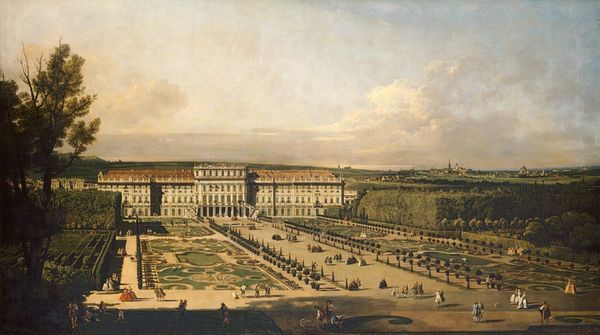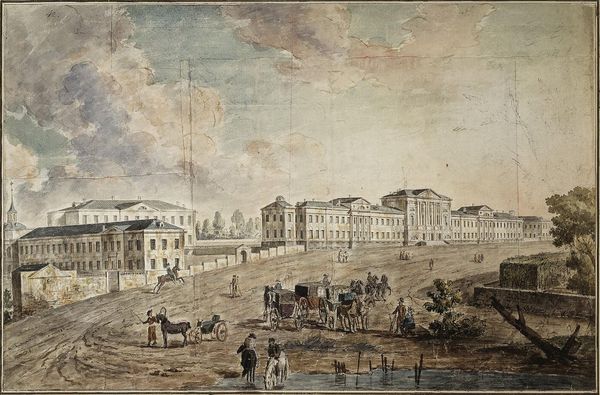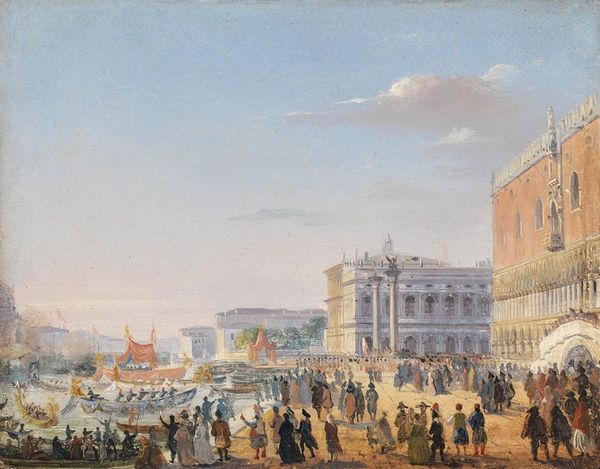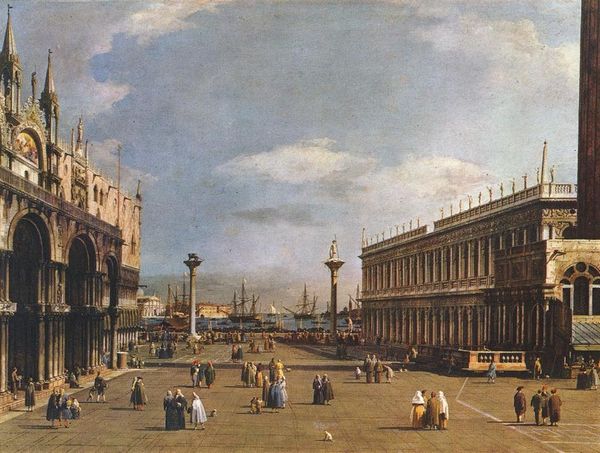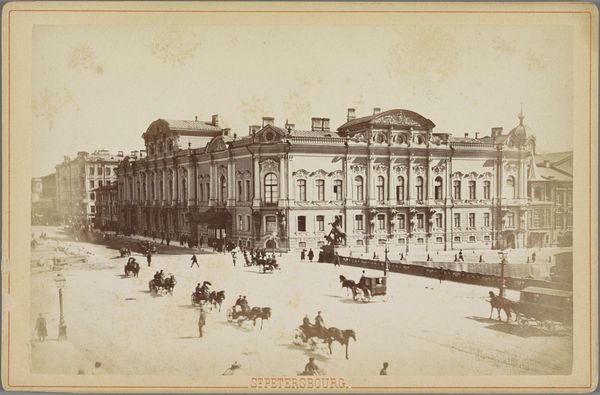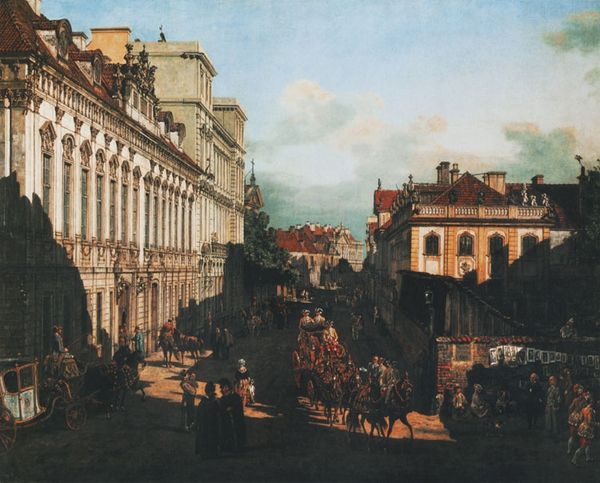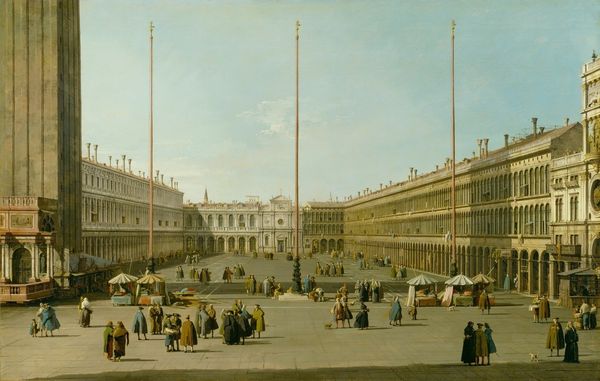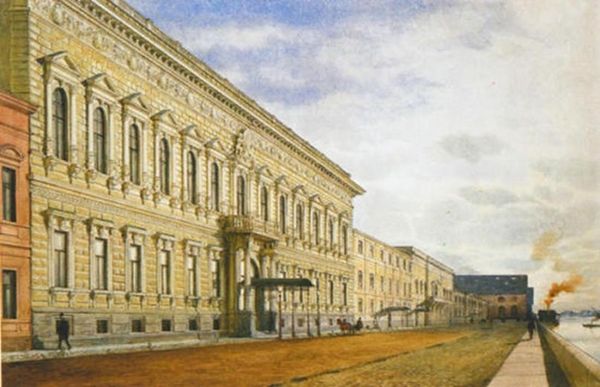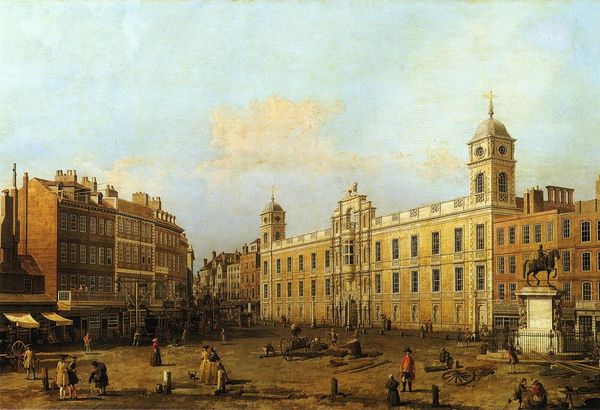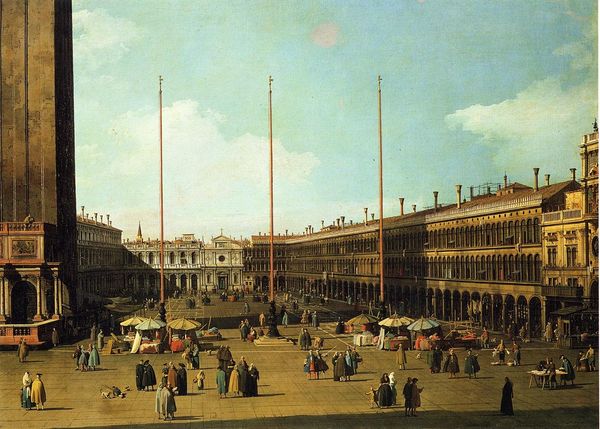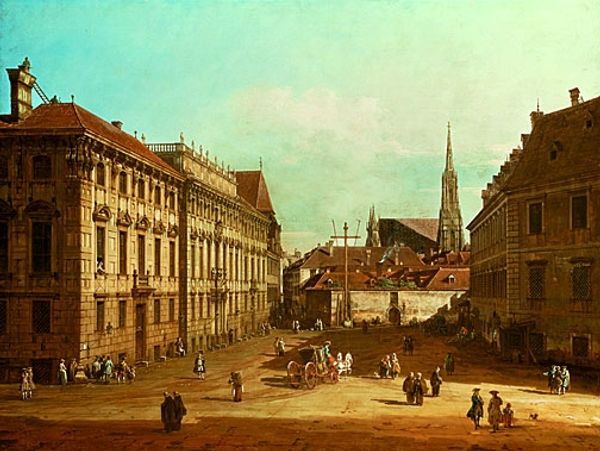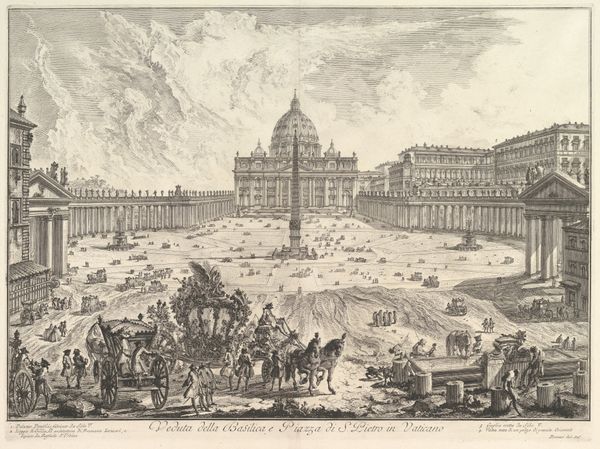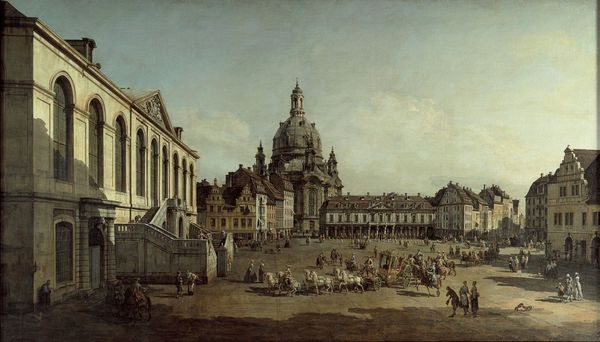
painting, oil-paint
#
baroque
#
cityscape
#
painting
#
oil-paint
#
oil painting
#
cityscape
#
history-painting
Copyright: Public domain
Curator: Welcome to the Kunsthistorisches Museum, where we’re standing before Bernardo Bellotto’s “Schloss Schonbrunn,” an oil on canvas completed around 1760. Bellotto, known for his detailed cityscapes, really captures the grandeur of the era here. Editor: It certainly does have a sense of pomp. At first glance, the vast open space almost feels empty, despite all the people and carriages dotted around. There’s a stillness, a posed quality, as if everything is arranged for a royal portrait. Curator: Exactly. Bellotto was commissioned to document imperial properties. These weren't just paintings, they were statements of power and order. Think about the context: the Habsburgs, their authority cemented through architecture and its representation. Bellotto’s skill lies in making the urban environment itself appear as a carefully curated symbol of that power. Editor: So, it’s about manufacturing an image, even through paint. It's interesting how the class structure plays out. You have the imposing palace looming in the background, a tangible embodiment of power, then you have the anonymous figures in the foreground, their individuality sacrificed to the overall composition of courtly life. The artist gives them just enough detail for them to fulfill their assigned positions. Curator: Absolutely, and observe Bellotto's meticulous rendering of architectural details, and how he uses light to accentuate the palace's facade. This isn't simply representation; it's about idealizing power. Think about how such imagery, replicated in prints, further solidified the Habsburg image throughout Europe. Editor: The sheer scale reinforces that intention. By exaggerating distances and meticulously placing the figures, Bellotto emphasizes both the monumentality of the structure and its significance to the court's overall ambitions. Do you see hints of future revolutions here, an obliviousness to the struggles beyond the palace walls? Curator: Perhaps a premonition is sensed now, from our more critical viewpoint, but I believe it was foremost an effective propaganda meant to convey the Habsburgs as enlightened rulers in a civilized world, rather than foreshadow a shift in sociopolitical authority. What ultimately lasts, do you believe? Editor: Well, paintings such as this do endure and bear witness to evolving social standards and value systems as society progresses. That being said, what remains is their challenge of us to re-evaluate the historical moment. Curator: It does offer so many points of reflection. Thank you for your insights.
Comments
No comments
Be the first to comment and join the conversation on the ultimate creative platform.
